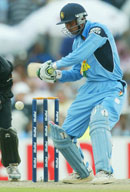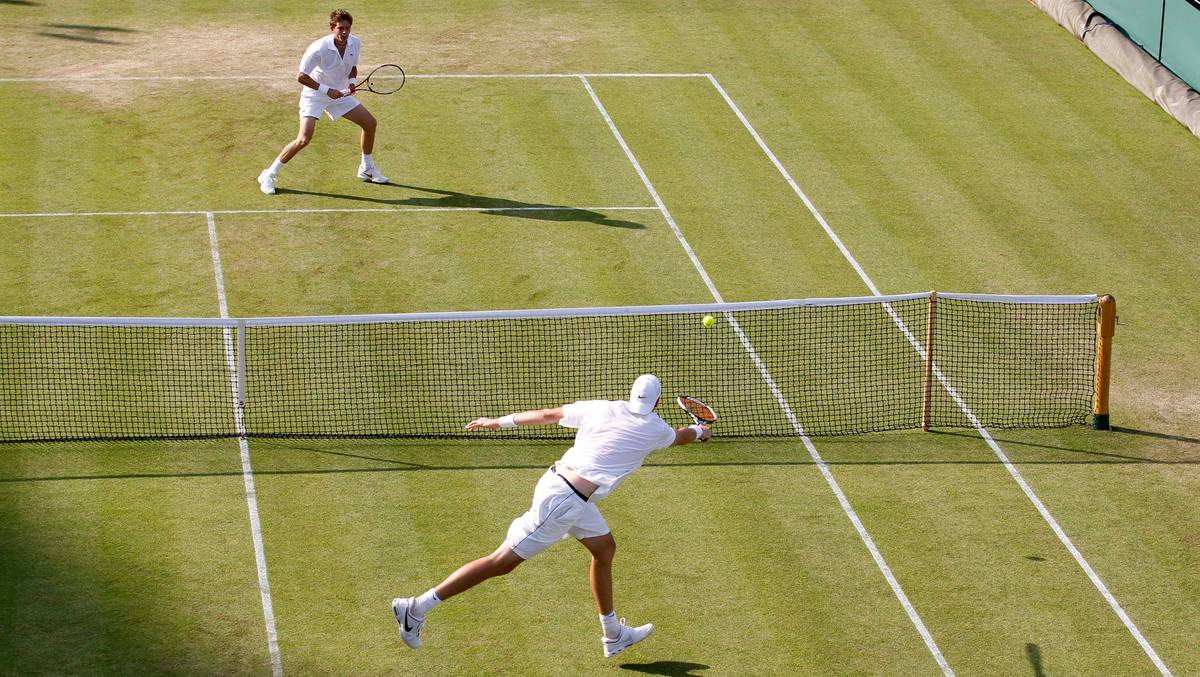Australia are the holders and favourites ahead of Sunday’s final (Photo: Getty Images)
The championship started on February 9 and ends on March 23. In other words – 6 weeks of cricket with the world’s top 14 nations are over.
A small and unimportant sporting event for us here in Norway, which appears mostly on the results pages of Aftenposten.
But for a quarter of the world’s population, it is one of the biggest sporting events, on par with the soccer World Cup and the Summer Olympics. For people in countries like India and Pakistan, it is the most important sporting event in the world.
The Cricket World Cup is played every four years, and four years ago it was Australia who triumphed, coming out on top against Pakistan in the final at Lord’s Cricket Ground in London.
Follow the BBC’s coverage of the WC final on Sunday 23 March from 09.00
Australia’s World Cup run so far has cemented its place as the world’s leading cricket nation. The country also reached the 1996 World Cup final, losing to Sri Lanka.

India is Australia’s final opponent (Photo: Getty Images)
“Super Six”
This year’s WC has produced some surprising results. The tournament is made up of 14 participating nations, and with two groups of seven teams each. While everyone plays against each other, the top three in each group advance to an intermediate stage, or “Super Six”.
Those who did not progress included England, Pakistan and the West Indies. All of these teams have cultures and traditions that would make it a huge disappointment if they did not make it to the intermediate stages of the World Cup. Hosts South Africa also failed to make it past the group stage.
Most surprising are Kenya and Zimbabwe, which both made progress. Australia, India, Sri Lanka and New Zealand are other countries struggling.
Due to a mix of terror fears and death threats, England and New Zealand chose not to attend the matches against Zimbabwe and Kenya, which were due to be played in those countries. This led to Zimbabwe and Kenya being awarded the wins.
For England, this was fatal. Had England won against Zimbabwe, they would have qualified for the play-offs.
Inlay and dispensing
Most Norwegians have no knowledge of cricket at all, and have no idea what it means. Not too surprising. After all, this is the ball game we usually played during recess in elementary school. Like most ball sports, there are many rules, and probably more rules in cricket than in any other sport.
But to make it easier, we can say it like this:
A cricket match consists of one “home team” and one “away team”. Each team has 11 players. Before the match begins, a coin and a crown are tossed to determine who will bat and who will bowl first. The one who bowls is the “inlay”.
The away team lines up around the field with their players, while the home team has only two players on the field at any one time. Both are equipped with bats and protective fences.
Possibility of “walking”
In the middle of the oval-shaped grass field is a stretch of hard sand that is stepped on for about 20 meters. Directly behind the batsman are three pieces of wood, with two more pieces of wood lying on top of them. The goal of the bowler is to get the batter out of play. The goal of the batsmen is to get as many “runs” as possible.
If the batter hits well, he starts running towards the other end of the sand. His partner who has not hit yet runs in the opposite direction. If they see the ball still far away in the field, they run again.
They must complete their run before the ball returns to the “goalkeeper,” the player who stands in protective equipment directly behind the sticks. If they have run twice, they get two “runs”.
If the ball passes the ground past the touch line, you automatically get four runs without having to run. If the ball passes the line without touching the ground at all, you get six runs.
Exit the game
The away team has several ways to exit the game:
– The ball hits the pin directly.
– The ball is caught in the air by one of the outfield players before it hits the ground.
– The ball is thrown onto the pins before the batsmen have completed their “run”.
– The batter moves his foot forward and stops the ball with his shin before it hits the pins. This is a discretionary decision by the umpire, and is called “foot before wicket”.
When a batsman is out, he is replaced by a new one. When the tenth batter is out, the innings is over.
The exit of a batsman is called the “fall of wickets”. For example, if you say “150 runs for 5 wickets”, it means that the infield team has managed to run up to 150 runs, while 5 batsmen have been dismissed. If everyone is out after, for example, 220 runs, you say “220 all out”.
At such a point in the match, the players switch places. Those who were outside come in, and vice versa. The new innings (those who will now bat and run) have one task: to make the team more “runs” than the previous innings. If we continue with the example above, this time it means a “target” of 221 runs.
One day match
The explanation here applies to one-day matches. Only one-day matches are played in the World Cup. This means there is a limit to the number of bowls.
An “over” consists of six bowls. In WC, the game is a “50-over” game. Also a maximum of 300 bowls per team. If the game starts at 8am, it usually finishes around 4-5pm. So about 8-9 hours, including food and drink breaks.
India and Australia have been the two best teams throughout the World Cup. Australia have yet to concede a point, and are the clear favourites. Despite the fact that team captain Shane Warne was banned for doping before the tournament.
Both India and Australia have developed some of the oldest organised sports in the world, with some of the greatest cricketers having played for over 100 years.
And if India beat Australia on Sunday, it would be one of the proudest sporting moments in the country’s history.
Link
Published
03.21.2003, at 14.45

“Infuriatingly humble coffee guru. Travel practitioner. Freelance zombie fanatic. Certified problem solver. Food scholar. Student.”





